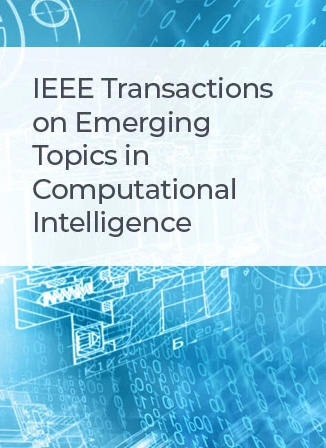Evolutionary Sequential Transfer Learning for Multi-Objective Feature Selection in Classification
IF 5.3
3区 计算机科学
Q1 COMPUTER SCIENCE, ARTIFICIAL INTELLIGENCE
IEEE Transactions on Emerging Topics in Computational Intelligence
Pub Date : 2024-09-05
DOI:10.1109/TETCI.2024.3451709
引用次数: 0
Abstract
Over the past decades, evolutionary multi-objective algorithms have proven their efficacy in feature selection. Nevertheless, a prevalent approach involves addressing feature selection tasks in isolation, even when these tasks share common knowledge and interdependencies. In response to this, the emerging field of evolutionary sequential transfer learning is gaining attention for feature selection. This novel approach aims to transfer and leverage knowledge gleaned by evolutionary algorithms in a source domain, applying it intelligently to enhance feature selection outcomes in a target domain. Despite its promising potential to exploit shared insights, the adoption of this transfer learning paradigm for feature selection remains surprisingly limited due to the computational expense of existing methods, which learn a mapping between the source and target search spaces. This paper introduces an advanced multi-objective feature selection approach grounded in evolutionary sequential transfer learning, strategically crafted to tackle interconnected feature selection tasks with overlapping features. Our novel framework integrates probabilistic models to capture high-order information within feature selection solutions, successfully tackling the challenges of extracting and preserving knowledge from the source domain without an expensive cost. It also provides a better way to transfer the source knowledge when the feature spaces of the source and target domains diverge. We evaluate our proposed method against four prominent single-task feature selection approaches and a cutting-edge evolutionary transfer learning feature selection method. Through empirical evaluation, our proposed approach showcases superior performance across the majority of datasets, surpassing the effectiveness of the compared methods.求助全文
约1分钟内获得全文
求助全文
来源期刊

IEEE Transactions on Emerging Topics in Computational Intelligence
Mathematics-Control and Optimization
CiteScore
10.30
自引率
7.50%
发文量
147
期刊介绍:
The IEEE Transactions on Emerging Topics in Computational Intelligence (TETCI) publishes original articles on emerging aspects of computational intelligence, including theory, applications, and surveys.
TETCI is an electronics only publication. TETCI publishes six issues per year.
Authors are encouraged to submit manuscripts in any emerging topic in computational intelligence, especially nature-inspired computing topics not covered by other IEEE Computational Intelligence Society journals. A few such illustrative examples are glial cell networks, computational neuroscience, Brain Computer Interface, ambient intelligence, non-fuzzy computing with words, artificial life, cultural learning, artificial endocrine networks, social reasoning, artificial hormone networks, computational intelligence for the IoT and Smart-X technologies.
 求助内容:
求助内容: 应助结果提醒方式:
应助结果提醒方式:


